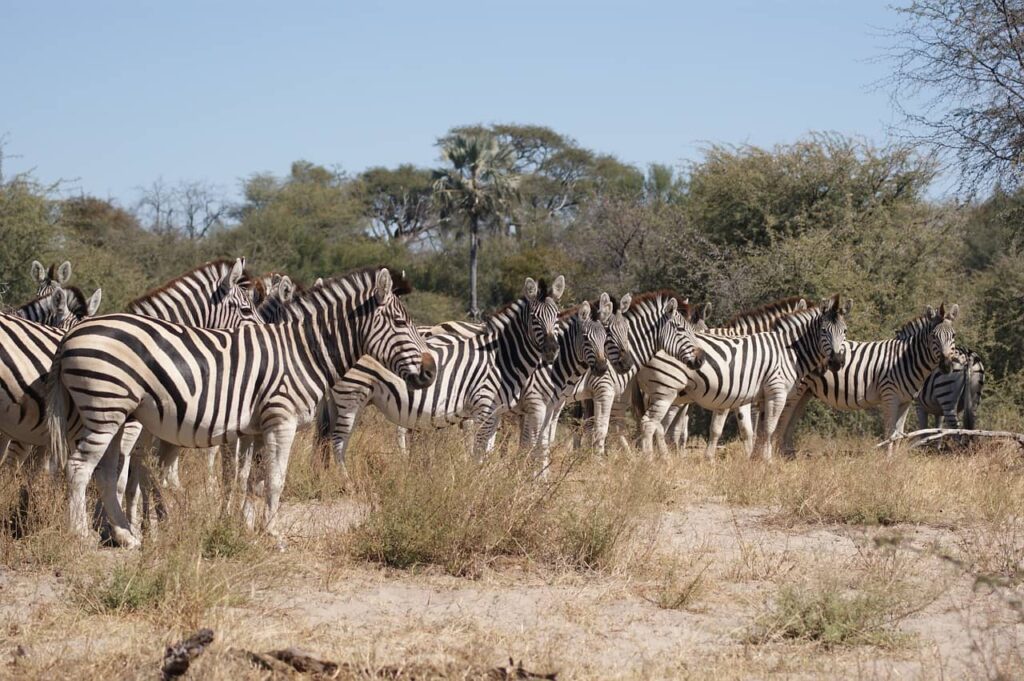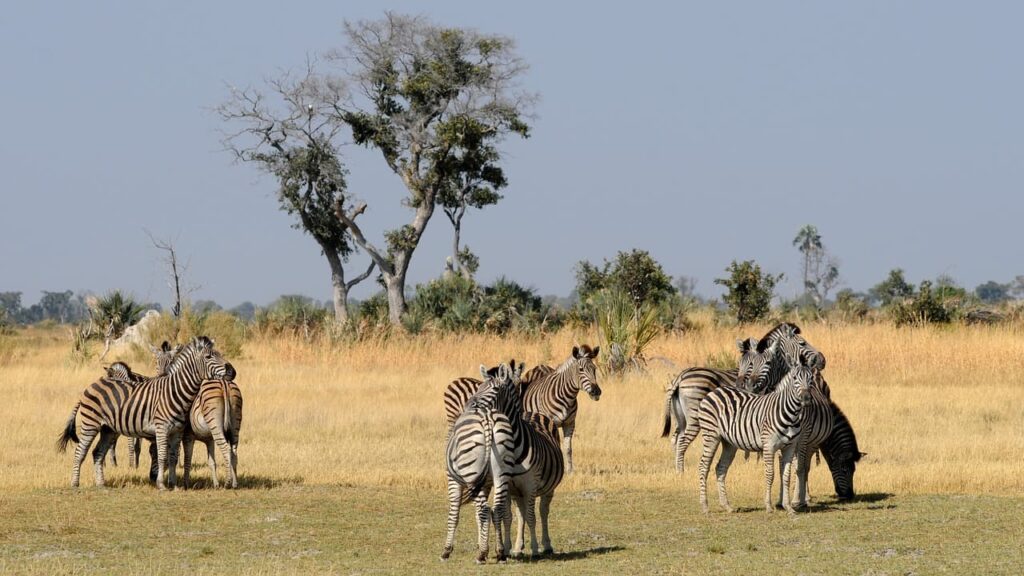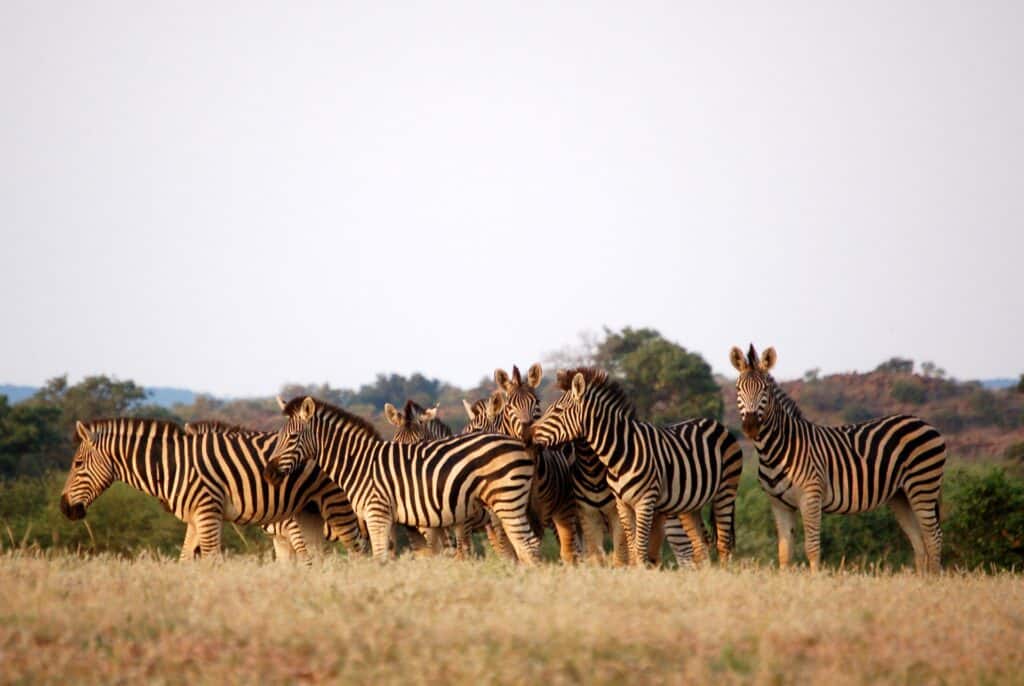 Matt Wise
Matt Wise
Botswana’s zebra migration is an almost unknown, wild spectacle that occurs annually in this southern African country. It’s the longest single migration of animals that has ever been recorded, and it’s an incredible sight to see first hand, as thousands of zebra kick up plumes of dust as they move from one grazing area to another.
This guide will explain the best places in Botswana to see this natural phenomenon, as well as the best times of year to visit to enjoy the best experience possible. This is our complete guide to Botswana’s zebra migration.
The mass zebra migration of Botswana occurs twice a year, as herds of zebra move first from north to south, then back from south to north. They move with the seasons and the rainfall, always in search of fresh grazing land. The zebra will cover huge tracts of land, walking over 300 miles during the course of the migrations. Up to 30,000 animals will be on the move at any one time. While it’s not Africa’s largest migration, it is the largest in southern Africa.
It’s a truly unique spectacle, but a spectacle that has only recently been ‘discovered’. Botswana was once the site of some of Africa’s largest migrations, larger even than the famous Serengeti migrations. But due to poor land management and farming policies, these migrations were largely halted, as population numbers dwindled and fences broke up traditional routes.
In the mid-2000s, researchers noticed that Botswana’s zebra were making peculiar movements though. They began to realise that the herds occupied certain areas of land at certain times of the year, and that they were covering incredible distances across the vast Kalahari Desert to do so. The zebra were migrating again, and one of the longest animal migrations in the world had gone by largely unnoticed, potentially for years. Now, if you visit the right areas of Botswana at the right time of year, you can experience this natural spectacle, in all its glory.


The zebra migrate to find different grazing areas as the seasons change. Botswana experiences distinct wet and dry seasons. Much of the interior of the country is made up of the dry, barren, semi-arid Kalahari Desert where life can only be supported during the stormy wet season. The north of Botswana comprises the more fertile deltas of the Okavango and Chobe rivers, where watering holes and rivers are still full of water throughout the dry season.
The dry season in Botswana runs from April to October, while the wet season occurs from November to March.
Read our guide on the best time to visit Botswana
The zebra will spend the long dry season in the wetlands in the north of Botswana, enjoying the plentiful water of the rivers. As the dry season comes to an end, the zebra will begin to move from the north to the south, following routes that have been taken by these animals for thousands of years.
They cross the plains of the Kalahari Desert, now wracked by thunderstorms, to find more grazing further south. They enter the vast Makgadikgadi Salt Pans, a place that in the dry season is devoid of life and water but that is now bursting with vegetation. It’s here that they spend the rest of the rainy season, before turning back to reach the northern deltas by the start of the next dry season.
From May to November, the zebra will be in the north of Botswana. As the rain begins to fall at the end of November and the start of December, the zebra begin their long migration towards the interior of the Kalahari Desert. They will be on the move until January, when they reach the salt pans of Makgadikgadi. That’s where they will stay until they repeat the long return journey again at the end of March, to make it back to the wet north in time for the dry season that begins again in April and May.

Botswana’s zebra migration can technically be experienced across the country. However, much of the route passes through remote, largely inhospitable land that’s difficult to travel through. Conveniently though, the migrations start and end in two of Botswana’s most spectacular national parks: Chobe National Park in the north, and Makgadikgadi Pans National Park deep in the interior to the south.
The majority of visitors to Botswana will go on safari during the dry season, generally from May to November, when there is little migration taking place. During this period, you can see the herds of zebra in Chobe National Park and in the Okavango Delta where there is plentiful water. But you won’t see the mass migration taking place.
The best time to see this natural spectacle of mass migration is actually during the off-season, when it rains, and when most tourists tend to stay away from Botswana. Things might get more than a little wet and muddy, but it’s an incredible opportunity to see the zebra herds moving across the land by the hundreds.
At the end of the rainy season, in Chobe National Park and along the Okavango Delta, you may be lucky enough to see the zebra migration and all the predators that chase them south too. However, this wet region can become easily flooded and the tall grass and dense vegetation can obscure the beautiful sight of these striped beasts galloping across the land. Travelling in the region during this time of year can even be dangerous and at times even impossible due to the ground conditions.
Rather than attempting to see the migration in the north, it’s better to head south and to do so at a time when most other tourists will be leaving Botswana completely. The best place to watch this magnificent migration is within Makgadikgadi Pans National Park, and the best time to watch it is December to January and March to April when the zebra are arriving or leaving.

SIGN UP